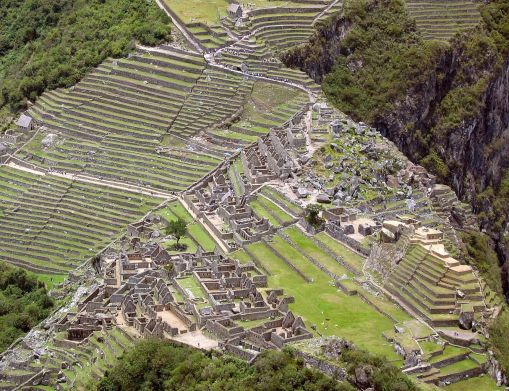One of the seven wonders of the world, Machu Picchu is very mysthical place. It has been discovered accidentally in 1911 by American archeologist Hiram Bingam during an expedition of the Yale University. Ever since the curiosity of scientists is growing. There are many interpretations for the ancient city already. None of them can give the answers needed for sure.
 |
| Machu Picchu ancient city, Peru |
 |
| Machu Picchu ruines, Peru |
This architectural masterpiece is located in the Andes, 2300 metres above the sea level and 112km from Cusco, in the foot of the Sacred Valley of the Incas. From the town inhabited centuries ago, have only left ruins.
 |
| Machu Picchu ancient city, Peru |
Located in the middle of tropical mountain rainforest, this is probably the most interesting urban creation of the Incas with these heights, the giant walls, the tarrasses. As it was never found by the Spanish conquerors, the place is very important as a cultural place for scientists, because it hadn't been demolished. And yet the secrets it’s still hiding can not be revealed by scientists.
 |
| Machu Picchu ruines, Peru |
One of the theories suggests that the city is part of a bigger complex of protective walls and its purpose was to protect people from Indian attacks. The city is composed by four parts. One of them is the religious one. There are the Sacred square, temples. There is also the sun laboratory. The Incas used it to detrmine the seasons and hours, using the shadows that are made by the sun to the rocks. In one other part of the city are assumed to be set up the biggest residential buildings. In the third part is erected the watchtower along with other buildings.
 |
| Machu Picchu ruines, Peru |
A tomb has been found, mainly with feminin remains. That's why scientists made assumptions that the Incas brought the woman in the city to get protected from the Spanish invadors, and that most of the inhabitants of the city were women.
 |
| Machu Picchu ruines, agricultural terrasses, Peru |
 |
| Machu Picchu ruines, Peru |
The city is so mystherious not only because of its purpose but because of the way it has been built. The area is very difficult to reach. The discoverer Bingam have many hypothesis. One of them is that Machu Picchu was the safest refuge of the Incas. So, after a siege in Cusco in 1536, when Manco and his people were defeated by the Spanish conquerors, they came here.
Other hypothesis supports the claim that the city of Machu Picchu was significant religious centre.
However, this is very interesting place for both tourists and scientists.
No comments:
Post a Comment